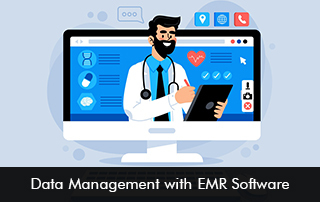In this day and age, where everything is digital, it’s important for healthcare providers to handle patient data effectively to offer top-notch care. Electronic Medical Records (EMR) Software has changed how doctors and nurses manage, keep, and look at patient details. Using EHR Software to manage data well means things run smoothly, patient care improves, and all the rules are followed.
How EMR Software Makes Data Management Easier
EMR Systems are key when it comes to sorting through huge amounts of medical information, so that doctors and nurses can get to it whenever they have to. Thanks to organized storage, updates that happen right away, and secure ways to get in, EHR Software makes keeping clinical records easy. This enables that critical details about a patient are always there when the provider needs them.
How EHR Software Streamlines Data Management
Everything in One Place
Electronic Medical Records software brings all of a patient’s records together in one spot. No more hunting through piles of paper – doctors can see medical histories, test results, and prescriptions right away. This means they can make better decisions about patient care.
Keeping Information Safe
With more and more data breaches happening, it’s good to know that EHR Software takes steps to protect medical information. It uses technology like encryption and user authentication to ensure only the right people have access to records. Following rules like HIPAA also helps keep things secure.
Better Interoperability
EMR software lets different parts of the healthcare system talk to each other easily. This means your information can be shared safely between the doctor, specialists, labs, and even the pharmacy. It helps avoid unnecessary tests and makes sure everyone is on the same page about patient treatment, facilitating smooth care coordination.
Making the Most of Electronic Medical Record (EMR) Software
Healthcare providers looking to get the most out of their EHR software should focus on these key areas:
- Keeping the software up-to-date to boost security and features.
- Making sure staff are well-trained so they can use the system effectively.
- Putting safeguards in place to back up data and avoid losing important information in the electronic medical records software.
- Connecting the EMR system with other digital health tools to provide complete patient care.
In a Nutshell
Managing patient data well with EHR software is a must-have for healthcare today. By keeping patient information safe, well-organized, and easy to access, EMR systems help clinicians work more efficiently, lead to better patient results, and enable decisions based on solid data. As technology keeps changing, using EMR software to manage data will keep pushing healthcare forward.








